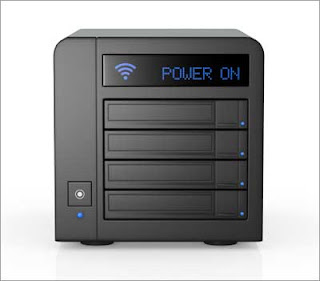RAID Backup Arrangements
There are many different RAID setups out there. There are two that are commonly used by people interested in multi drive backup.
- The first is known as a RAID 1 array and requires two or more hard drives.
- The second is a RAID 5 array and you'll need at least 3 hard drives.
Both are excellent forms of protection and increased readability, but a RAID 1 is simpler than a RAID 5. When creating any RAIDs you need to be sure that all of the drives you're using are identical. You never want to make a RAID with a 60KB drive and an 80KB drive, for example. It will cause many issues with your system and even slow it down or result in file corruption.
RAID 1 Array Benefits
The basic RAID 1 setup involves two 1TB hard drives. You'll end up with the speed and capacity of a single 1TB drive, but you'll have protection that a single drive can't provide. The second drive is a mirror image of the first and vice versa. In other words, both drives in the RAID contain the exact same data and files. If either of the two drives fails then the other keeps going. You don't lose anything at all and there's no downtime because your system is hot swappable. All you need to do is replace or "hot swap" whichever drive failed and you'll be protected again, which you can do without even shutting down your system.
RAID 5 Array Benefits
A RAID 5 array provides the same protection of a RAID 1 multi drive, but it also comes with a boost to your speed as well as capacity, which seen in RAID 0. The presence of three drives allow for two of the drives to be used for storage and the third to be used as the backup. How a RAID 5 works is a little harder to understand. Data is broken down into sections called stripes and stored on the first two drives - this increases both speed and storage capacity. The third drive is a parity drive, which saves all of the data from the first two drives. If one of the storage drives crashes, then the parity drive comes into play with the missing data from the defective drive. This will cause your system to slow down a bit, but you'll still have all of your data and again you can hot swap the damaged drive.
Other RAID Levels
The different RAID arrays or configurations are arranged in levels that are labelled 0 through 9. The RAID 5 array, mentioned previously, is a combination of RAID 0 and 1. RAID 0 is when you have two or more drives just to enhance performance, without any sort of backup. In RAID 0 there isn't actually any "redundancy" or copying of files.
Another interesting RAID setup is called RAID 10, or RAID 1+0. Like RAID 5 it is a combination of 1 and 0, but RAID 10 is much different and some people use it as an alternative to 5. You only need two drives and, like 1, it ends up cutting your disk space in half, but you do get some enhanced performance perks as with RAID 0. Plus you have protection from RAID 1. Both drives are duplicates of one another as well as partition drives and all of the data is striped as well. Striping writes data simultaneously across disks, making your system faster.
Dominick Rivoli is the owner at A1 Rivoli, top computer and office equipment repair and service specialists for the Long Island, NY Nassau, and Western Suffolk areas. Visit the website at www.a1rivoli.com.

No comments:
Post a Comment